Blue whales are one of nature’s most majestic creatures. They’re the largest creatures that have ever lived on our planet, yet they can be brought down by something as simple as a collision with a large boat. These gentle giants are not hunters in the traditional sense, at least, their prey is too small for humans to notice. Like all intelligent mammals, the blue whale mother has a long gestation. But, just how long are blue whale pregnancies?
Read on to learn more about blue whales, their gestation, and their babies. Then, find out what you can do to help protect this incredible endangered species.
Background: The Blue Whale
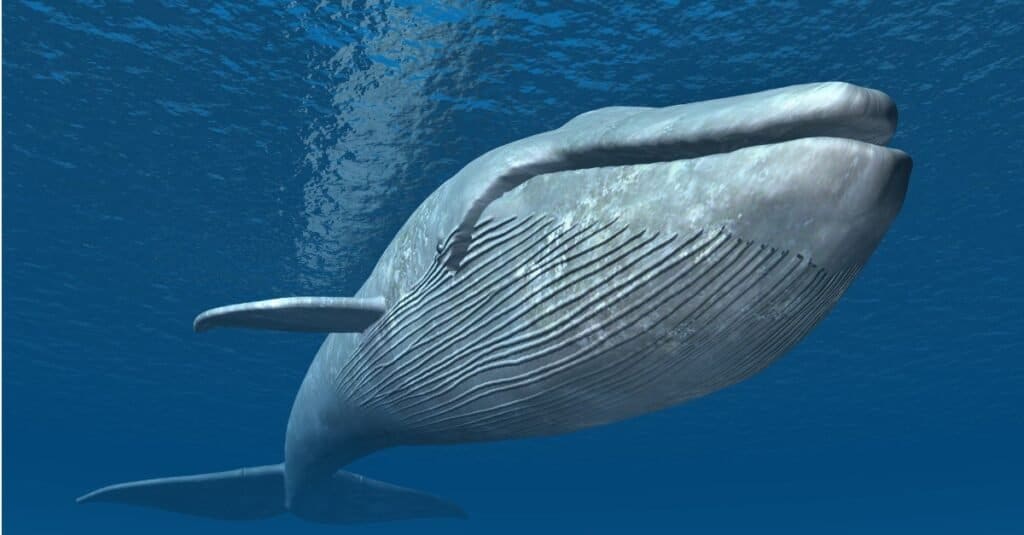
The blue whale (Balaenoptera musculus) is the largest member of the Balaenoptera genus.
©iStock.com/MR1805
Before we dive into the blue whale’s gestation, let’s get to know this incredible animal a little bit better.
Size and Appearance
Blue whales are, as you would imagine, blue. But they’re also gray, with pale bellies. They have long, relatively delicate bodies with long tails, dorsal fins, and two flippers for arms. On average, adults grow to between 70-80 feet long and can weigh over 200,000 pounds. Blue whales have blowholes located on the tops of their heads. These blowholes project spouts of water than can reach up to 40 feet above the ocean’s surface.
Habitat and Range
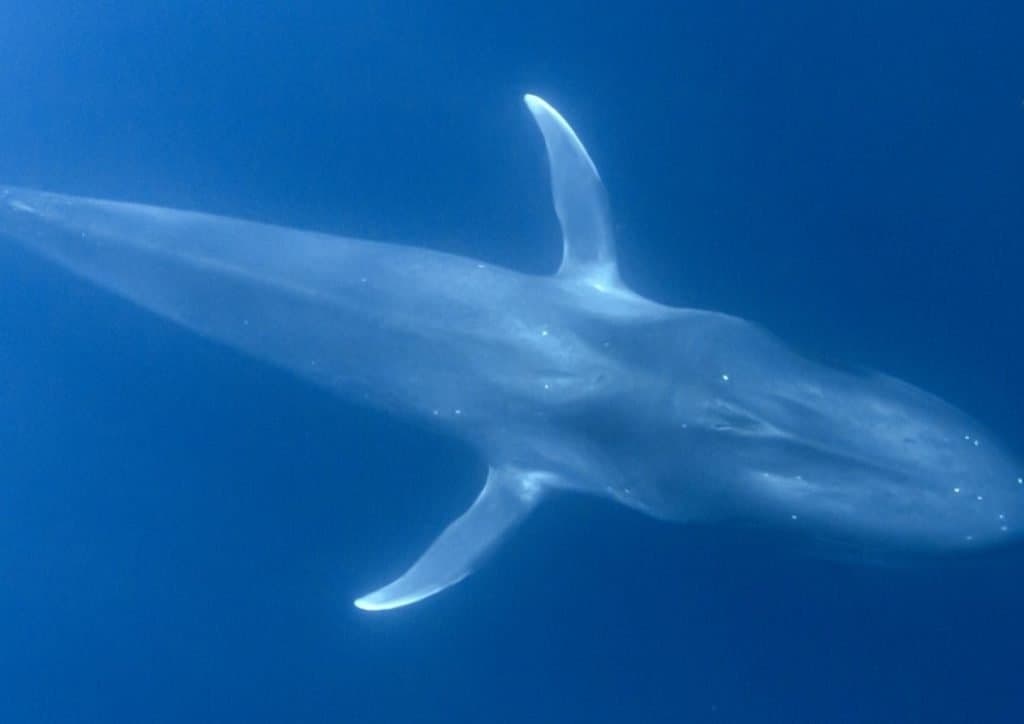
Blue whales travel thousands of nautical miles per year in their seasonal migration to find food.
©Rich Carey/Shutterstock.com
Blue whales live in all the world’s oceans. They spend their summers near either the northern or southern poles of the planet. In the winter, blue whales migrate to equatorial waters to feed. Baby blue whales are usually born in the late winter or spring, and accompany their mothers during migration.
Diet and Behavior
The largest creatures on the planet eat some of the smallest animals on Earth: krill. Blue whales are known as baleen whales. Their mouths are full of finely packed baleen ‘teeth’ that they use to filter feed. When a blue whale finds a nice patch of krill, it swims toward it at high speed. Just before impact, they open their mouth wide and suck in all the water and krill. Then, using their baleen, they filter the water out and swallow the krill.
How Many Days are Blue Whales Pregnant?
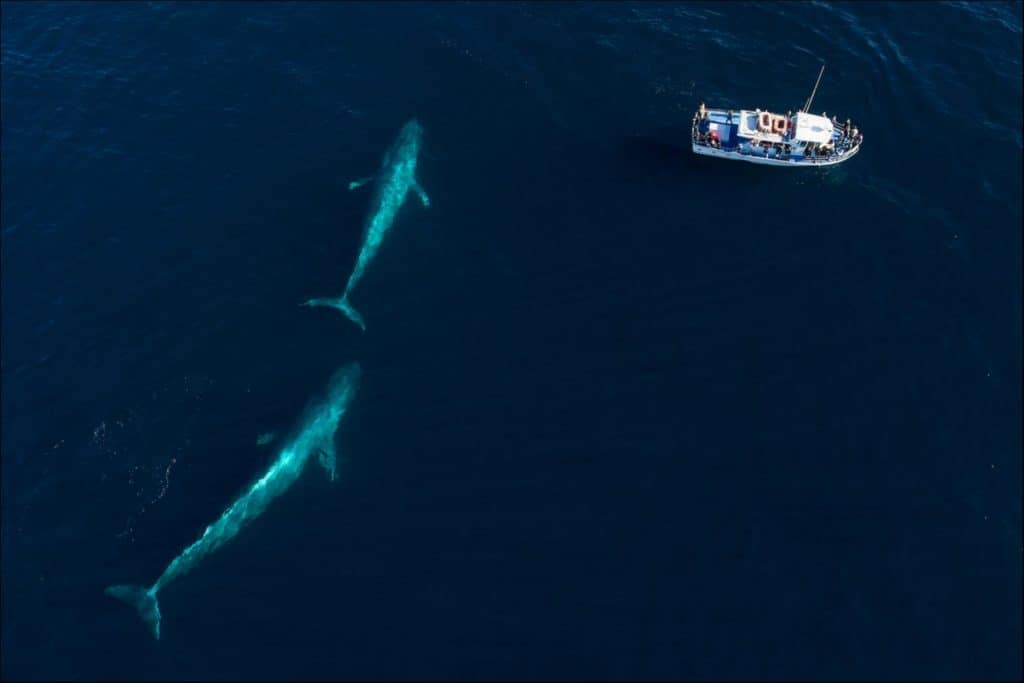
Surprisingly, blue whale pregnancies aren’t that much longer than human pregnancies.
©Chase Dekker/Shutterstock.com
Blue whales reproduce every 2-3 years; their pregnancies last right around one year. That means that blue whales are pregnant for 12 months or around 365 days. Female blue whales reach sexual maturity as young as five years old, or as late as 15 years old. Blue whales can expect to live up to 80 or 90 years. That means that, in her lifetime, a single blue whale mother may give birth to up to 40 calves!
How Many Babies Do Blue Whales Give Birth to?
Blue whales do not give birth to litters of young, like dogs or cats. Instead, these gigantic marine mammals give birth to single calves. Blue whale mothers give birth to a single calf at a time. At birth, calves weigh around 5,000 pounds and measure over 20 feet long. Within the first six months of life, the calf will grow to over 50 feet long and double its weight. This is thanks to the extremely fat-rich milk of the mother, which may contain up to 50% fat.
How Long Do Blue Whales Live?
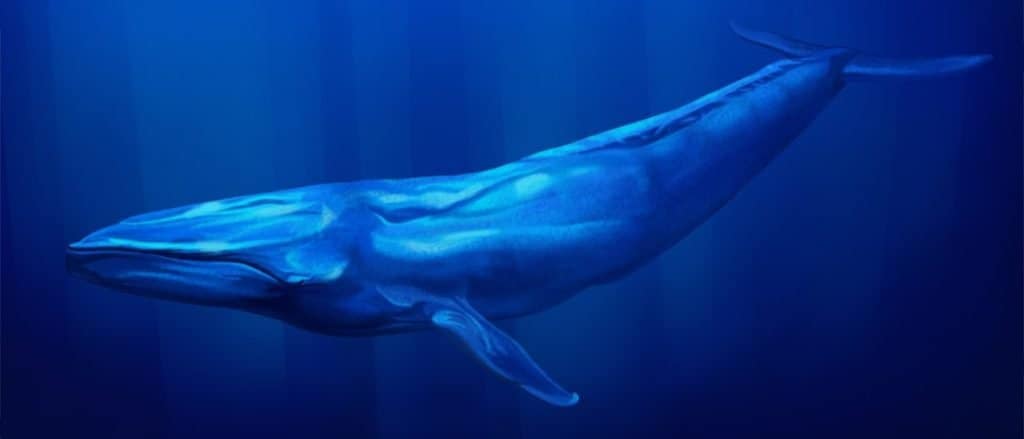
Scientists use earwax, of all things, to determine a blue whale’s age.
©Atomic Roderick/Shutterstock.com
Blue whales are believed to live up to 90 years. There are no captive blue whales, and scientists are only able to study these underwater giants under certain conditions, so no one is positive about their maximum lifespan. However, by counting the layers of earwax in the blue whale’s ear canal, scientists can come to a pretty close approximation of age at death. This is because blue whales continuously build up earwax plugs throughout their lives. Scientists can read these layers like rings in a tree trunk.
What Animal Stays Pregnant the Longest?
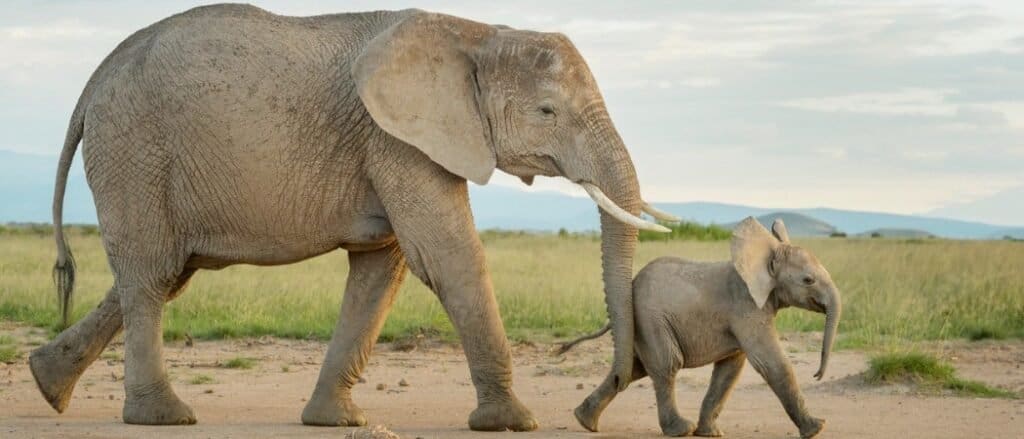
Blue whales may have long pregnancies, but they’re nothing compared to the pregnancy of the mother African elephant.
©iStock.com/AndreAnita
African elephants have the longest pregnancy of any animal. These incredible pachyderms gestate their babies for a whopping 22 months. That’s more than twice as long as the blue whale’s pregnancy! Why such a long pregnancy? Well, scientists believe that it takes a very long time for such a large animal to develop. But, more than that, the African elephant is one of the most intelligent animals on Earth, and it takes a good bit of time for all of those brain cells to develop.
What Whale Stays Pregnant the Longest?
It might be tempting to think that, since blue whales are the largest whale in our oceans, they also have the longest pregnancy. But, you’d be wrong. In fact, the award for longest pregnancy of any whale goes to the orca, or killer, whale. These iconic black and white hunters gestate their babies for anywhere from 15-18 months.
Blue Whale Conservation
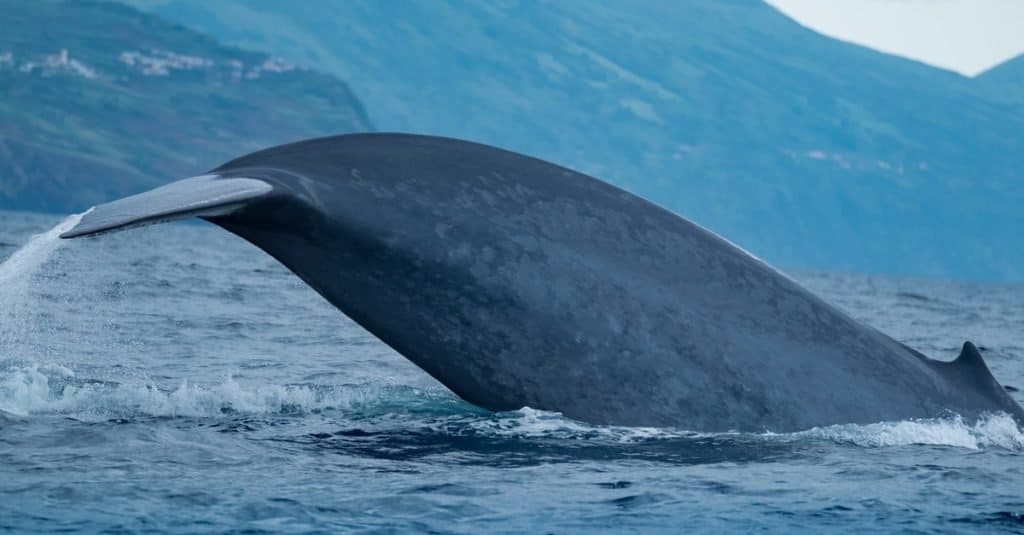
Blue whales face threats from oceanic pollution, overfishing, increased ocean noise, habitat degradation, and boat strikes.
©Wild_and_free_naturephoto/Shutterstock.com
Blue whales are currently listed as endangered. This is largely due to their near extermination in the 19th century by commercial whalers. Today, it is illegal to hunt blue whales, but that doesn’t mean they’re safe from extinction.
Blue whales are in danger of being struck and killed by ships, entangled in fishing lines and nets, and starving to death because of oceanic pollution. They’re also negatively impacted by oceanic noise and climate change.
You can help blue whales too! If you see a blue whale, or any whale, in the wild, be sure to stay a safe distance away. Never harass or bother a blue whale, particularly if it is a mother and calf.
The photo featured at the top of this post is © iStock.com/MR1805
Thank you for reading! Have some feedback for us? Contact the AZ Animals editorial team.







